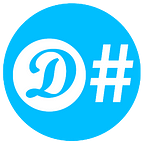How Mark Zuckerberg got tricked … A behavioural economics look at the social network.
If you’ve been reading this series you’ll know i’ve been giving a behavioural economics dissection of some of my favourite movies. I recently wrote about how Eminem used in-group bias to win the rap battle in the movie 8 Mile.
In-group bias is where we instinctively trust those we feel are in the same group as us. In this last article about behavioural economic’s in the movies my final film illustrates this perfectly…
…The Social Network
First up, I love this film, it’s my favourite after the Big Short. I recently rewatched it and what jumped out was one cognitive bias that occurred over and over again…
…In group bias
People tend to trust what is similar to them. It’s a short cut when information is scarce. It’s why football fans in the same colours bond even though they don’t know each other.
Throughout the start of the Social Network it’s made clear that Mark Zuckerberg is not in a University fraternity or any form of elite group. It’s something that obviously affects the character. This helps us understand Mark’s constant feeling of being an outsider.
Later on, Justin Timberlake’s character Sean Parker comes on to the scene and beguiles Mark with tall tales of Silicon Valley start ups. He makes Mark feel they are part of the same group. At the same time, Sean reframes Mark’s perception of his business partner, Eduardo. Sean makes Eduardo look as though he’s not passionate about tech and that he just wants to monetise the website. Sean is establishing Mark and himself as definitely in the same group, and Eduardo as definitely outside that group.
He then intensifies the in-group/out-group effect by encouraging Mark to move to Silicon Valley, the home of tech. This further reinforces the connection that Sean and Mark are in the same group, the tech group, whereas Eduardo is not. Mark begins to see his best friend and partner Eduardo as an outsider.
Eventually Sean wins and Eduardo is pushed out of Facebook.
Sean identified what group Mark wanted to be part of, he made it clear that he and Mark were in it and that Eduardo wasn’t.
At an instinctive level, our brains trust what is similar to us. With so many decisions to make we have evolved a cognitive short cut to trust people from the same group as ourselves. Meaning we lack trust in outsiders.
It’s another protection mechanism that kept our ancestors alive.
Sean Parker has utilised this bias to manoeuvre his way into a key role in Facebook, now the western world’s largest social media platform.
So, how can this biased be used in business?
Well, much of Behavioural Economics put’s into words things we already instinctively know. In this situation you can make others feel in-group by finding what you both have in common and then amplify the importance of these. Another reason why this may sound familiar is that this is essentially branding. Branding makes you feel in-group by defining a set of characteristics and makes you feel part of them.
Apple is Creative, Nike is heroic, Virgin is rebellious.
Some brands define what they are and use advertising to make that look attractive. Essentially they define their group and make you want to be part of it. Apple, Nike and Virgin are massively successful at doing this but it has taken a massive marketing spend to get there.
What may be a faster strategy is to use this cognitive short cut the same way Sean Parker did. In the Social Network he wanted to be part of Facebook. He knew what was important to Mark and sold himself as the same group mark aspired to be in. Businesses can find out what group their customers belong to and reflect those back.
A good example is Bank Australia who rebranded a few years ago. Previously they were the Members and Education Credit Union. Despite their new name they were never a well known bank across Australia. However their rebrand and advertising positions them as Australia’s ethical bank. This wont appeal to everyone, but for a segment of the population it’s relevant and important to them. For some ethically mind people they will subconsciously feel that Bank Australia is in their group, therefore they trust them. This connection is triggered in their system 1 brain, their instinctive brain. This is the part of the brain that uses short cuts to save time. By making someone feel they are both part of the same group, the brain’s shortcut answer is “I can trust this person”.
Subaru are another example. In the 1990’s they stumbled on an insight in their research. Their cars were disproportionately popular with lesbian drivers, specifically those who enjoy the outdoors. Over the next ten years Subaru successfully aimed their advertising at this group and enjoyed a lot of success.
These are both examples of companies who identified a group ignored by most brands. They didn’t try to sell themselves as a group you should join, they sold themselves as a group that you’re already part of. By appealing to your in-group bias you instinctively feel you can trust this brand. Also as part of the same group, you’re likely to be more loyal to them than anyone outside the group.
So, that concludes my series on behavioural economics in the movies. There are heaps more examples out there, if you think of any please comment below.
I hope you enjoyed this intro to our behavioural biases.
There’ll be more to follow, so please follow me for more.
If you want to get in touch or see my work, here are my channels
Damo#
https://www.damienhashemi.com
https://twitter.com/DamienHashemi
https://www.linkedin.com/in/damienhashemi/
https://www.flickr.com/photos/54972121@N07
https://vimeo.com/manage/showcases/6266362/info
